
US Power Grid & Clean Energy
The Energy Shift: Dirty to Clean Energy
The U.S. electric grid is a complex network of independently owned and operated power plants and transmission lines.
What is a Grid?
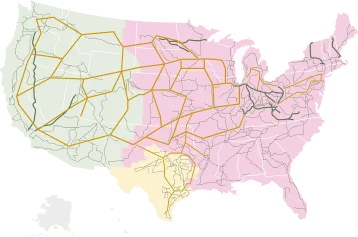
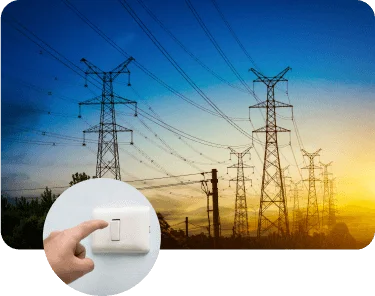
The electric grid delivers electricity from points of generation to consumers. The electricity delivery network functions via two primary systems: the transmission system and the distribution system.
The transmission system delivers electricity from power plants to distribution substations, while the distribution system delivers electricity from distribution substations to consumers.
The grid also encompasses myriads of local area networks that use distributed energy resources to serve local loads and/or to meet specific application requirements for remote power, village or district power, premium power, and critical loads protection.
No matter how the energy is created, it flows through the grid.
Is there a national power grid in the U.S.?
No, there isn't. In fact, the continental United States is divided into three main power grids:
- The Eastern Interconnected System, or the Eastern Interconnect
- The Western Interconnected System, or the Western Interconnect
- The Texas Interconnected System, or the Texas Interconnect
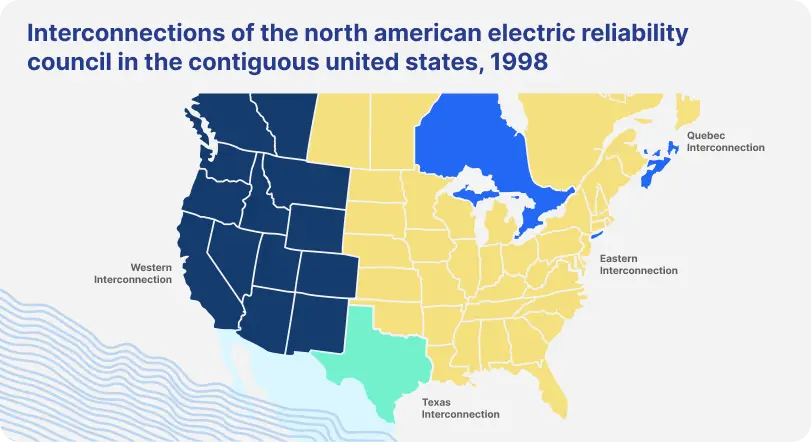
Where Does Our Main Source Of Energy Come From?
Our main source of energy comes from dirty energy Coal, Oil, Gas, etc. There are almost 8,000 Operational Power Plants in US alone.
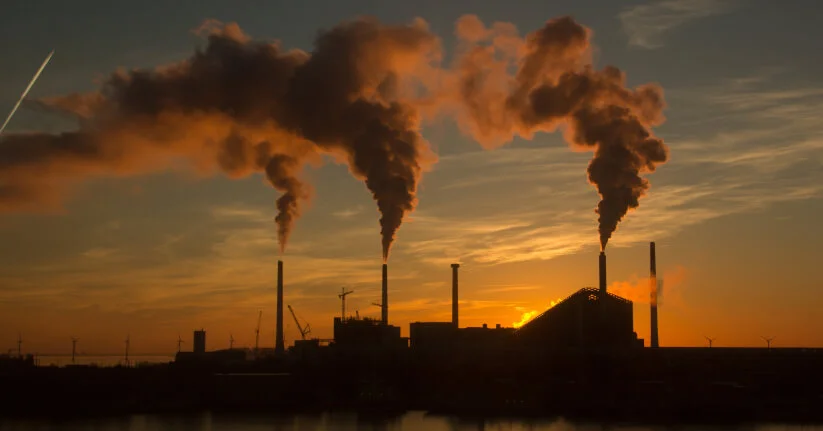
What Do We Actually See?
What We See Is The Wires, And The Sub Stations….
What Do We Not See?

What we don't see is what it takes to power the grid…
The centralized power system is DIRTY. A large % of all global carbon emissions come from COAL. Coal is the biggest source of carbon pollution on the planet. WE DIG UP THE PLANET, DRIVE IT TO THE POWER PLANTS AND….
In 2020, about 4,007 billion kilowatt hours (kWh) (or about 4.01 trillion kWh) of electricity were generated at utility-scale electricity generation facilities in the United States.
About 61% of this electricity generation was from fossil fuels—coal, natural gas, petroleum, and other gases.
In 2020, U.S. coal production decreased 24.2% to 535.4 million short tons (MMst) from the 2019 level, while the number of producing mines also decreased to 552 mines from 669 mines in 2019.
Coal production in basins east of the Mississippi river decreased 29.4% while production declined 20.4% in basins west of the Mississippi river.
The rebound in coal demand in 2021 is set to be short-lived, with coal use forecast to flatten out by 2025 at around 7.4 billion tons. This would make 2013, when global coal demand reached 8 billion tons, coal’s all-time peak. But while coal’s share in both the electricity mix and the overall energy mix are in steady decline, coal use in absolute terms is not set for a rapid decline in the immediate future.
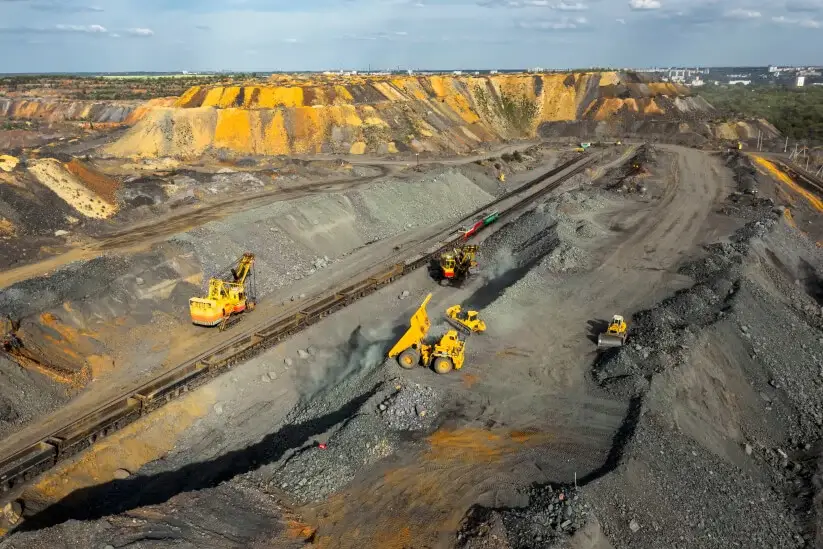
Where does the pollution come from?
If you look further into the process of using coal, you can see that there are many points in which pollution is created, beyond just the trucks and equipment to mine and transport the coal.
That ranges from pulverizing the coal, filtering it and then eventually burning the coal to create the heat and energy.
Pulverized Coal Injection System
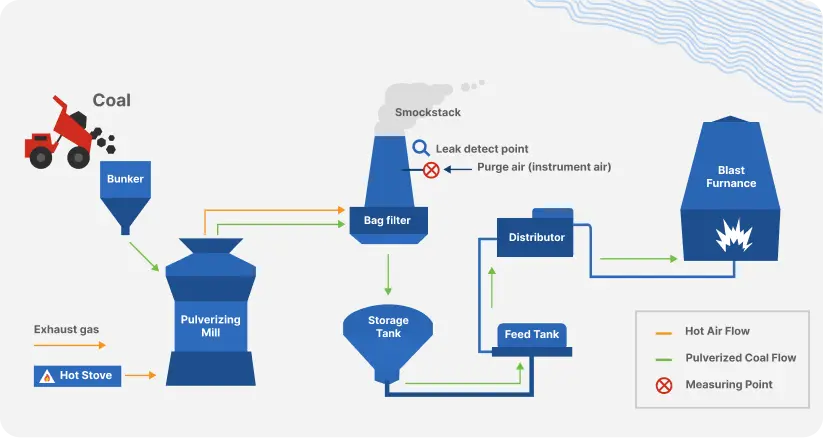
How is electricity delivered?
No matter where the source of energy comes from, it needs to be delivered through the same process.
It comes from the power plant, then has the be “stepped up” to be able to get the energy to the transmission lines so that it be carried long distances in most cases.
Then, it is delivered to the local neighborhood where it is "stepped down" to a voltage that is used to power homes and businesses.
This is an extremely inefficient process...

Do you know how much electricity disappears between a power plant and your plug?
Not only are there tremendous inefficiencies in how energy is generated, but then the electricity needs to be carried from the power plant to the home. In this video, you can see how much is lost in the transmission of the energy as an example of the inefficiencies.
What does this all mean?
The U.S. grid loses about 5 percent of all the electricity generated through transmission and distribution—enough to power all seven Central American countries four times. Separately, grid congestion, like traffic congestion, leads to waste and costs consumers approximately $6 billion annually in higher energy bills.
What are you actually paying for on your current plan, compared to having your own personal power plant?
Generation Expenses
There are significant Generation Expenses because there are employees to drill, truck the coal from one point to the other, supervisors, middle management, executive teams, brokers, plant workers and utility company middle people to source distribution.
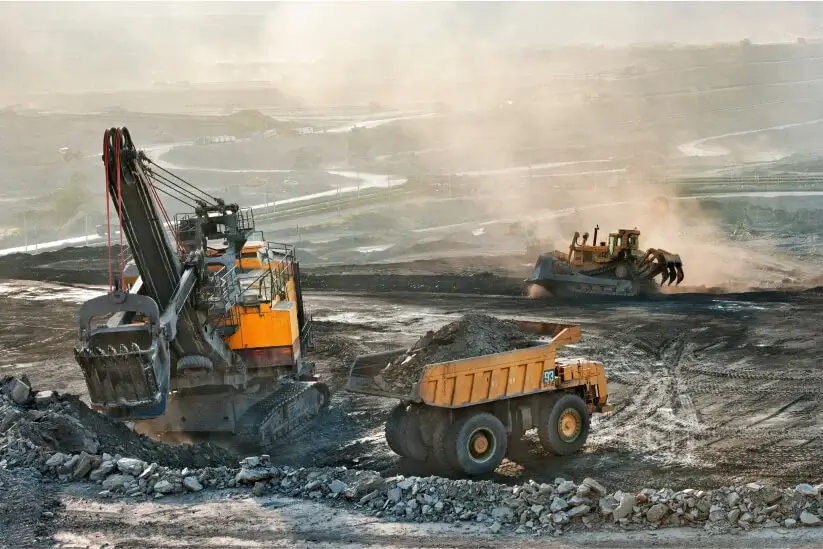
Transmission
There are losses and waste from the source of energy to the power plant to and to the home. Only about 1/3 of the initial energy makes it to the home so that's about 66% you still pay for. Plus, there are employees to maintain poles, lines, transformers, and miscellaneous components.
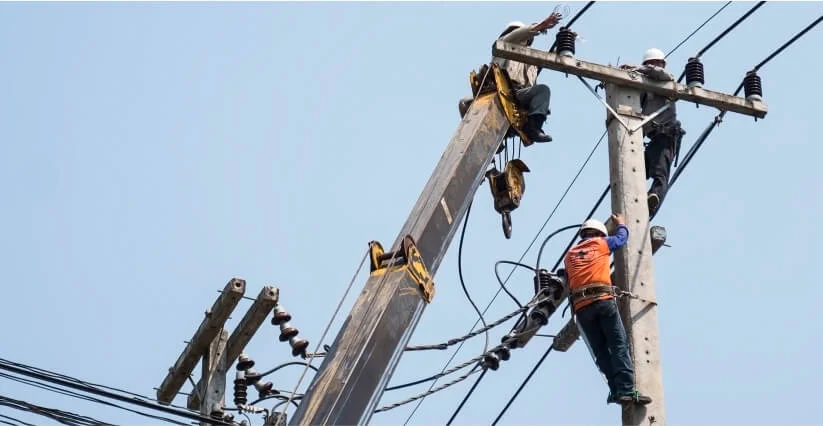
Wasted Energy
And there is lots of wasted energy and costs associated with employees and companies to deal with toxic materials...

Surely there's a better alternative to all that?
There is. Now, let’s compare that to how rooftop solar works...
How does sunshine become solar energy?
Step 1
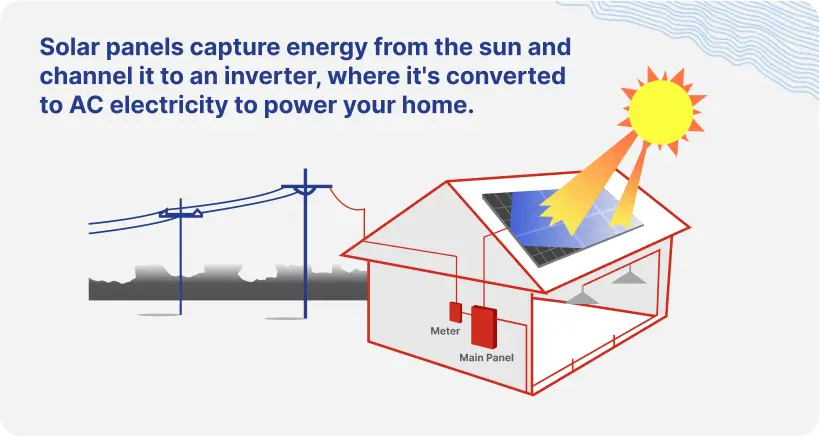
There is no need for transmission losses, or all of the inefficiencies associated with the grid. It is clean and efficient.
Step 2
Where is the energy created?
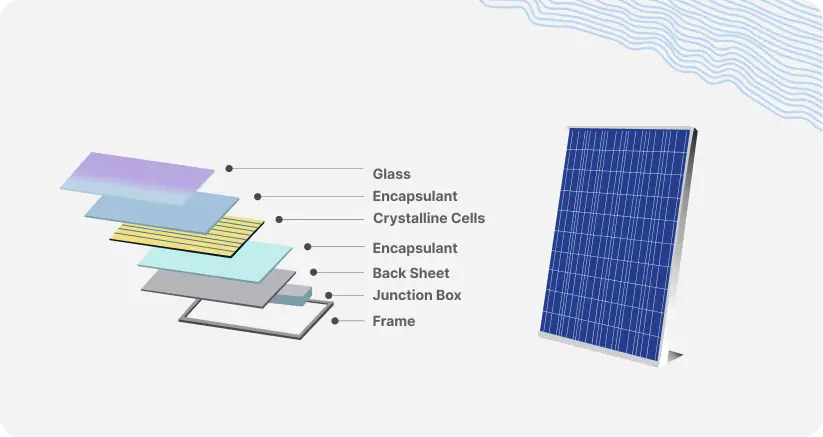
Many Cells Are Turned Into A Panel
This is a picture of a typical solar panel. The energy is created in the Crystaline cells. The cells are covered with an encapsulant on the top and bottom as well as tempered glass on the top that protects the crystalline cells from the elements, such as heat, cold, moisture, humidity and hail. The panels that are manufactured today are highly durable and not typically impacted by the various weather conditions.
Step 3
How does the whole system work?
PV Array refers to all system components
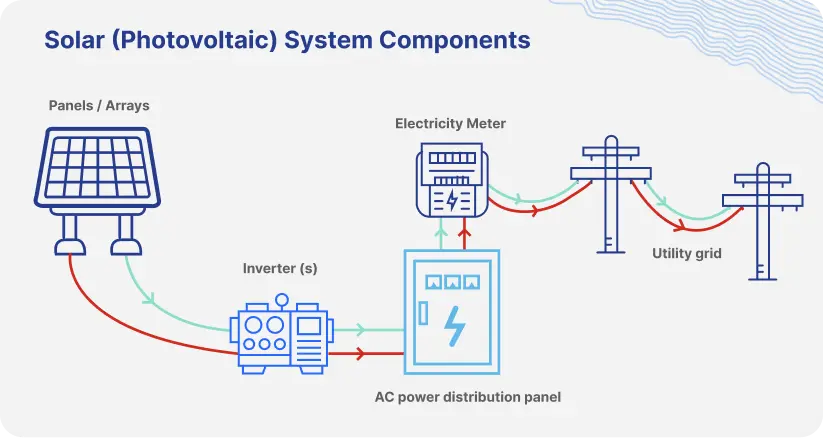
Now let's learn about how all those parts are connected and how they work together to take energy from the sun and turn it into energy you can use in your home!
The entire solar system is very technical, but we can keep the conversation simple by looking at the most important components of the system.
Panels/Arrays – The panels create the energy. A group of panels is called an “array”.
Inverter(s) – The inverters convert the energy from Direct Current (D.C.) to Alternating Current (A.C.) which is what we use in our homes.
AC Power Distribution Panel – The inverters connect to the A/C distribution panel, otherwise referred to as a Main Panel.
Electricity Meter – The system is connected to the Grid through the electricity meter provided by the local utility. This net meter tracks both production and consumption.
Utility Grid – The “grid” is what is commonly used to refer to the massive complex network of transmission lines and wires, generation facilities and transformers across North America. These are the lines and wires that carry energy from the generation source to homes and businesses.
What does the future look like?
Well, it's pretty exciting...
Did you know:
- How much power generated in the US is green, what the goal for 100% renewable energy is, and what that means for the solar industry?
- When is renewable energy production predicted to surpass dirty energy production?
- What's happening to the coal industry?
- Which US states and which US utilities have a commitment to have 100% renewable energy by 2050?
How much power generated in the US is green, what is the goal for 100% renewable energy, and what does that mean for the solar industry?
We need more clean energy going into the energy grid
12% of
power
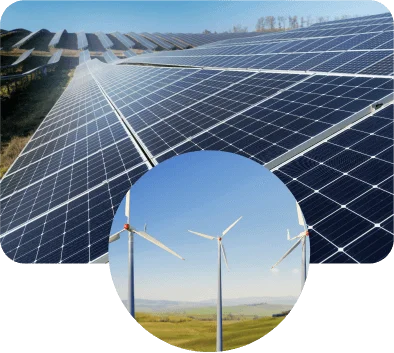
Nearly 90% of the increase in U.S. renewable electricity between 2008 and 2018 came from wind and solar generation. U.S. solar generation has increased from 2 million MWh in 2008 to 96 million MWh in 2018. Solar generation accounted for 2.3% of electricity generation in 2018. But only 3 % of the homes in the USA are producing Solar energy.
So, that means two things: 1. That lots of homes are being powered by renewable energy, but that is all mixed with the dirty energy that is being generated. 2. This is an incredible time to be in the Solar industry as more and more homeowners are converting to solar energy on their own rooftops instead of the dirty energy from the grid. In 2020, a new solar project was installed every 75 seconds!
When is renewable energy production predicted to surpass dirty energy production, and what is happening to the coal industry?
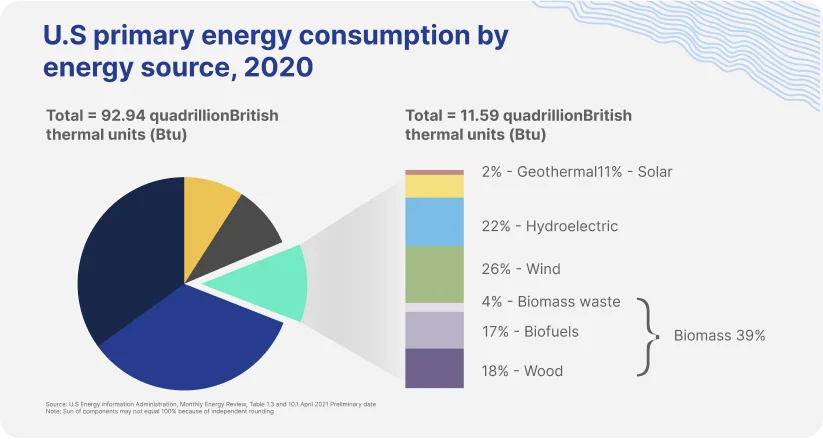
Renewables are currently about 12% of our total energy that is produced but is on track to surpass dirty energy as the largest source of electricity in the world by 2025 . In this graph, you can see that petroleum and natural gas has become the majority of the fuel for energy being produced and coal has been on the decline. But coal demand still expected to remain steady or to grow in key Asian economies, so there is no sign that coal is going to fade away quickly. The future of coal will largely be decided in Asia . Today, China and India account for 65% of global coal demand. With Japan, Korea, Taiwan and Southeast Asia included, that share rises to 75%. China, which currently accounts for half of the world’s coal consumption, will be especially influential.
By 2025, the European Union and United States will account for less than 10% of global coal demand, down from 37% in 2000.